This is by far my favorite challah recipe. It is soft, fluffy, and incredibly easy to make!
Eat it right out of the oven when it’s still warm, or use it for a traditional Shabbos meal. Either way, you can’t go wrong.
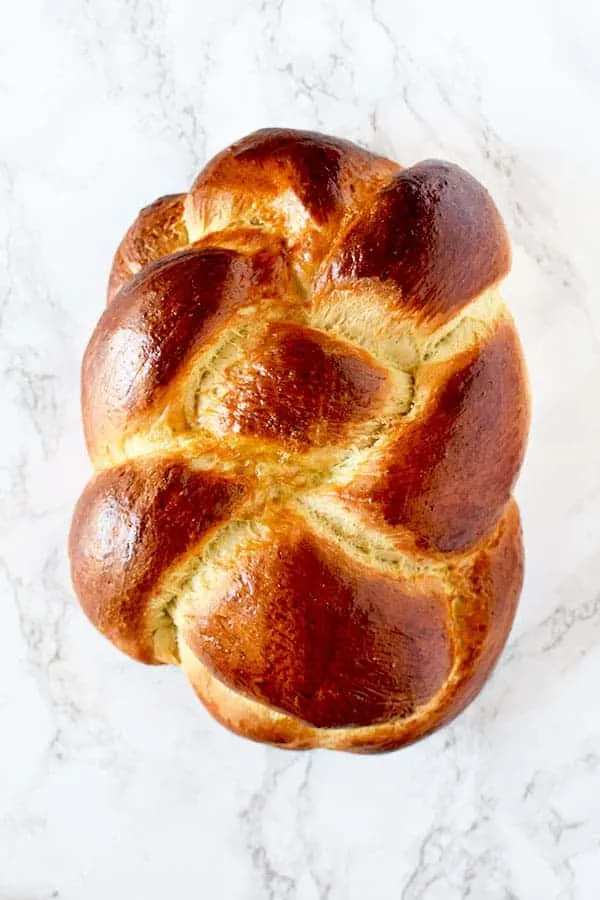
While bread in theory may be easy to make, I’ve always struggled to find a challah recipe that worked for me.
They always came out too heavy and only tasted good warm.
I mean sure, pretty much everything tastes best fresh out of the oven, but it shouldn’t have to be warm to taste good.
But really, is there anything better than fresh baked bread? If there is, I sure can’t think of it!
One of my favorite memories is the time I drove with a friend from Queens to the Adirondacks in Upstate New York.
We left really early and stopped at a huge supermarket in Albany for breakfast.
There, we found fresh bread that was still warm right out of the oven!
I couldn’t believe how soft and good it was… I’ve been obsessed with fresh bread ever since.
This recipe tastes just like store-bought, but better! It’s soft, fluffy, and tastes good warm or at room temperature. It even tastes good the next day.
This recipe really is the only one I’ve ever made that left me with too little challah to upcycle into other recipes.
There was no challah french toast or challah cinnamon toast Sunday morning.
I didn't even have enough for homemade croutons or bread crumbs. There was just a small end that was enough for a single serving of challah egg in a hole.
If you're looking for an egg challah recipe, then you should try my favorite egg challah!
CHALLAH VS BRIOCHE
While challah and brioche may appear similar, there is a key difference.
Brioche calls for butter and sometimes milk or cream.
Challah, on the other hand, is generally made dairy free, and uses oil in place of butter.
EGG CHALLAH VS WATER CHALLAH
This challah is a water challah, which is particularly popular in Israel.
The water challah came about because the sefardic community - who believe that eggs and too much sugar make bread more of a cake.
Egg challah, in contrast, is popular in the States and among Ashkenazi Jews.
BREAD FLOUR VS ALL-PURPOSE FLOUR
Bread flour has a higher protein content than all-purpose, which helps with gluten development.
This creates a chewy texture and heavier and denser bread. This can be great in recipes like bread bowls. However, it is less desirable in breads like challah bread, which you want to be light and fluffy.
All-purpose flour has a lower protein content, but can generally be substituted for bread flour.
Can I use whole wheat flour instead?
Generally, if you want to use whole wheat flour in bread, it's recommended to replace up to half of the all-purpose flour called for with whole wheat flour.
HOW TO MEASURE FLOUR AND OTHER DRY INGREDIENTS
The best way to measure dry ingredients is with a scale. However, this is not commonly done in the United States, where dry measuring cups are used instead.
To measure most dry ingredients, first spoon them into a dry measuring cup and then level off the measuring cup with an upside-down butter knife.
Make sure not to pack it down because it can lead to using more of the ingredient than called for.
The exception is brown sugar. To measure brown sugar, pack it into the measuring cup and then level off any excess.
To measure chocolate chips, nuts, or dried fruit, just pour them in and then level them off.
DRY VS LIQUID MEASURING CUP
Dry measuring cups are a set of cups that often come with measuring spoons. Each cup is a different measurement just like each spoon is a different measurement.
Liquid measuring cups, on the other hand, are cups that have measuring lines on the side to mark the measurements.
The problem with using liquid measuring cups to measure dry ingredients (like flour and cocoa) is that they are powders. So, as you shake the cup to level them off, the powders settle and you end up with more than you need.
I tested this with a friend who didn't believe me and we ended up with a number of tablespoons more than the recipe called for.
WHY sift Powdery Ingredients
There are a number of benefits to sifting powdery ingredients like flour and cocoa.
First of all, flour is often sifted before use to aerate it and remove any lumps. This helps in achieving a lighter texture in baked goods.
Secondly, if you measure flour that's just been sifted, you can get a more accurate measurement than from flour that's been packed tightly in a bag.
In addition, sifting dry ingredients together, such as flour, cocoa, and baking powder, helps make sure they're evenly dispersed.
Yeast
Yeast is used in bread and other baked goods to create a light and airy texture.
It does this by fermenting sugars, which causes dough to rise.
In most cases, the yeast is dormant until activated or "bloomed" by being rehydrated and woken up. Usually, this is done with warm liquid and a small amount of sugar.
Once activated, it begins the proofing process.
"Proofing" is the fermentation process where yeast eats the sugar and forms bubbles, indicating that it's alive and ready to leaven the dough.
Types of YEAST
There are seven different types of yeast used for baking. However, only five are relevant to home bakers, and just about all my recipes only use instant yeast.
WILD YEAST
Wild yeast is found naturally in the air. This type of yeast is used for sourdough breads, and in order to use it, you need to make a sourdough starter.
FRESH YEAST
Fresh yeast, cake yeast, block yeast, wet yeast, or compressed yeast, is found in small, foil-wrapped cubes.
It is far less popular with home bakers because it’s highly perishable. However, it is still widely available for commercial use and is still used by home bakers in some countries.
The benefits of using it is that it’s easier to measure and has the most leavening power.
If you want to use fresh yeast in this recipe, then for every 1 teaspoon of instant dry yeast, you'd need 17 grams (or 0.6 ounces) of fresh yeast.
Make sure to bloom it before using it in this recipe.
ACTIVE DRY YEAST
Active dry yeast looks like large-grained powder, mainly used by home bakers in the United States.
It has a much longer lifespan than compressed yeast, lasting up to a year at room temperature and more than a decade if frozen.
The main downside of using this is that a lot of the yeast is already dead, so you need more of it than other yeasts. This can cause an undesired yeast flavor.
If you want to use active dry yeast in this recipe, then for 1 teaspoon of instant dry yeast, you need 1 ¼ teaspoons of active dry yeast.
Make sure to bloom it first before using it in this recipe.
INSTANT YEAST
Instant yeast looks the same as active dry yeast. However, it does not need to be proofed before using.
Instead of having to be activated in warm liquid first, it can be added as is when making the dough.
It is more perishable than active dry yeast, lasting only 2 to 4 months at room temperature, but lasts for years if kept in the freezer.
This is my favorite type of yeast to use because it lasts longer than fresh yeast, and you need less of it than active dry yeast.
RAPID-RISE YEAST
Rapid-rise yeast is often specifically marketed toward users of bread machines. It’s essentially instant yeast with a smaller grain. The smaller granules allow it to dissolve faster in the dough and therefore rise faster.
While most baking experts believe that the bread flavors aren’t as developed by using this yeast, others feel it makes little difference.
Activating Yeast
The purpose of activating yeast is to make sure that the yeast cells are alive. This is a necessary step for most types of yeast.
To activate the yeast, mix the yeast with warm liquid (usually around 110°F or 43°C) and a small amount of sugar. The sugar provides a food source for the yeast. After a few minutes, the mixture should become frothy, indicating that the yeast is active and ready for use.
WHY ACTIVATE OR BLOOM INSTANT YEAST?
"Activating" and "blooming" yeast are different terms for the same process.
While instant yeast does not actually need to be bloomed, I do it anyway because it helps troubleshoot if any problems come up.
By blooming the yeast first, you know it is active. So, if the dough has trouble rising, you know it’s not the yeast.
This is particularly useful when you don’t have a “warm” place to let it rise.
While the sugar content may matter for most types of yeast, it doesn't seem to make a difference for instant yeast.
When I activate instant yeast, I usually mix all the liquid, sugar, and yeast together in the bowl. Once it froths up, I add the rest of the liquid ingredients followed by the rest of the dry ingredents.
How to Bloom Yeast
To bloom, place the yeast, lukewarm water, and sugar together in the bowl. Stir and wait for it to activate.
The water must be warm because hot water will kill the yeast and cool water won't activate it.
If you are using fresh yeast, make sure to break it up with a fork once it is in the water.
You know the yeast is activated when foam appears on the surface. This can take up to 10 minutes.
Storing Yeast
Once opened, store in an airtight container and keep in a cool, dry place.
If you keep the yeast in the freezer, it will stay good for years.
HOW LONG DOES IT TAKE DOUGH TO RISE?
How quickly dough rises depends on how warm the environment it is rising in is.
If you put it in the fridge for instance, it could take 8 hours or so. If you leave it on the counter in a comfortably warm room, it's usually 45 minutes to 1 hour.
However, sometimes dough can take up to 2 hours to rise depending on a variety of factors.
HOW TO RISE BREAD FASTER
To speed up the rising process, you can preheat the oven to its lowest temperature and turn it off.
Then, cover the dough with a damp towel and place it in the oven.
This trick works for me every time. On occasion, I may need to remove the dough and preheat the oven another time or two, but usually just once does the trick.
Some bakers feel it doesn’t allow flavors to really develop. Personally, I've never noticed much of a difference.
PUNCHING DOUGH DOWN
"Punching" is a bit of a strong word. Yeast is a delicate living thing, so you actually need to treat it with care.
What you’re really doing is lightly pressing down the dough through the center with your fist. This removes gases that have formed during the first rise.
By doing this, you are also bringing the yeast, sugar, and moisture back together, which is important for the second rise as the yeast feeds on the sugar.
After you “punch” down the dough, you should pull the edges of the dough to the center. Then, take the dough out of the bowl and place it on a lightly floured board. Next, scrape out the remaining dough from the bowl using a rubber spatula.
Lastly, shape your dough into a ball, and if desired, you can knead the dough two or three times to release additional air bubbles.
I like kneading my dough a few times by hand after the mixer has done most of the work. This creates an extra smooth crust.
THE SECOND RISE
The second rise allows the yeast to feed longer on the sugar. This allows the bread to become larger, have a better crumb, and develop a better flavor.
Also, if you were to let it rise only once, punch it down, shape it, and stick it in the oven, your bread would rise somewhat, but not enough for it to become fluffy.
Overproofing Dough
Letting the dough rise is known as "proofing the dough." Overproofing is when you let the dough rise too much.
If you let your dough rise too much, it will seem big and beautiful at first, and then it will fall and become dense after it's removed from the oven.
If you've found that you left the dough to rise to much larger than double its original size, punch it down, reshape it, and then let it rise to its proper size.
How long can I keep dough in the refrigerator?
You can refrigerate dough for up to 2-3 days. After that, the yeast may lose potency.
Keep in mind, the dough will continue to rise slowly during that time.
Can I freeze unbaked dough for later use?
You can freeze dough in airtight freezer container for up to four weeks.
When you're ready to use it, first thaw the dough in the refrigerator overnight.
It will take up to twice as long for the dough to rise as it would if it hadn’t been frozen.
Why did my dough turn out dense and heavy?
This can be due to overkneading, not letting it rise completely, overproofing, or using too much flour.
BAKING WITH OIL
Baking with oil produces a moister and tenderer texture compared to that of baked goods made with butter.
Cakes, cupcakes, muffins, and quick breads also tend to bake up taller with a better crumb and stay moist and tender much longer than recipes made with butter.
Also, since oil weighs less than butter, baked goods made with oil have a lighter texture than those made with butter.
In addition, butter is usually only 80% fat, whereas oil is 100% fat. As a result, the water that's present in butter strengthens the gluten in the flour, making it more dense and less tender than baked goods made with oil.
Oil is often used in recipes where a lighter and airier texture is desired or in recipes that call for both oil and butter, in order to have the benefits of oil while keeping the butter flavor.
Which Type Of Oil to Use
I use neutral oils like canola oil, safflower oil, and vegetable oil. You can also use stronger oils like olive oil and coconut oil, but they may change the taste somewhat.
Is it better to use canola oil or olive oil?
Canola oil is relatively cheap and, due to its lack of flavor and high smoke point, is very versatile.
Olive oil, on the other hand, is healthier. Also, its stronger flavor makes it preferable in recipes such as focaccia, which require its distinct taste.
Baking with Oil Conversion Chart
If you want to convert your butter recipes to oil recipes, take a look at my baking with oil - butter to oil conversion chart.
How to store Oil
Store oils in a cool, dark place to prevent them from becoming rancid.
If refrigerated, some oils, like olive oil, may solidify, but will return to a liquid state at room temperature.
Coconut oil begins to solidify in temperatures under 76ºF or 25ºC.
BAKING AT HIGH ALTITUDES
High altitude affects yeast doughs because the lower air pressure allows the yeast to rise 25 to 50 percent faster and the drier air makes the flour drier.
To fix this, decrease the amount of yeast in the recipe by 25% and adjust the water and flour as necessary to get a dough with the correct consistency.
Rising times are also much shorter at higher altitudes, so do not go by rising times, but by sight.
You can also give the dough one extra rise by punching it down twice before forming it.
Or, if you want to slow the rise down, you can cover the dough and place it in the refrigerator for its first rise, giving the dough more time to develop. However, it will rise much slower.
Adjustment for 3000 feet
- Reduce sugar: for each cup, decrease 0 to 1 tablespoon.
- Increase liquid: for each cup, add 1 to 2 tablespoons.
Adjustment for 5000 feet
- Reduce sugar: for each cup, decrease 0 to 2 tablespoons.
- Increase liquid: for each cup, add 2 to 4 tablespoons.
Adjustment for 7000+ feet
- Reduce sugar: for each cup, decrease 1 to 3 tablespoons.
- Increase liquid: for each cup, add 3 to 4 tablespoons.
Adjusting for a Convection Oven
Convection ovens blow the hot air around, producing around 25 to 30 percent more heat.
Since convection ovens produce more heat, you need either lowering the temperature or shortening the cooking time to compensate.
When recipes specify temperatures and cooking times, it’s for conventional ovens, unless specified otherwise.
A simple rule to follow is to lower the temperature by 25ºF or 14ºC when baking cookies and pies, and 50ºF or 28ºC when roasting meat and poultry. Some convection ovens offer separate settings for baking and for roasting.
You can also leave the temperature the same and instead, shorten the cooking time by 25 percent. For example, if your recipe calls for 60 minutes in the oven, check the food after 45 minutes instead.
However, keep in mind, some convection ovens actually make a heat adjustment for you. That is, if you set a convection oven for 350ºF, it might actually set itself to 325ºF to compensate. So, check your manual before making adjustments.
TROUBLESHOOTING
WHY IS IT TAKING LONGER THAN DESCRIBED TO BAKE?
Over time, the thermostat on ovens gets a little off, causing some ovens to run hot and others to run cool.
This is why recipes tend to say things like “10 to 15 minutes or until golden brown.”
So, if it takes you longer than expected, that’s fine, don’t worry about it. Just keep baking until ready.
WHY DID MY RECIPE COME OUT TOO DRY?
Just like some ovens run cool, others run hot. If your oven runs hot, bake these at a lower temperature.
Ideally, you should get an oven thermometer to know what temperature you’re really baking at.
HOW TO STORE BREAD
Breads, like challah and brioche, take longer to go stale, while sourdough bread is more resilient against mold than other types of bread.
On the other hand, there are breads, such as baguettes, which should be eaten same-day. Most breads can be stored.
DO NOT REFRIGERATE BREAD
Unlike commercial bread that has preservatives, homemade bread will become stale much faster in the fridge. Instead, you want to leave it out on the counter.
STORING BREAD IN A BAG
Storing bread in a bag may seem like a good idea, and it’s not exactly a bad idea, but it will make the crust softer due to trapped moisture.
If you do this, it is best to use it for toast.
STORING BREAD IN A BREAD BOX
Storing bread in a bread box will create an environment with balanced humidity and air circulation.
A large box is better because it will allow for maximum air circulation.
Make sure not to crowd your bread, because the more bread you put in the bread box, the higher the humidity level.
The downside of a breadbox is that bread is prone to molding, especially in hot weather.
How To Freeze Bread
Let bread cool completely.
Wrap each loaf tightly in plastic wrap and again in foil or freezer paper. Or, use a zip-top freezer bag with all of the air removed.
Freeze for up to 6 months. After that, the bread may become freezer burnt.
If you do leave bread in the freezer too long, and it becomes a little stale or slightly freezer burnt, don't throw it out.
Instead, you can use it to make French toast or croutons.
How to Defrost Bread
Defrost bread in the oven at 325°F or 163°C for 20 to 30 minutes, until soft and fully thawed in the middle.
Best Challah
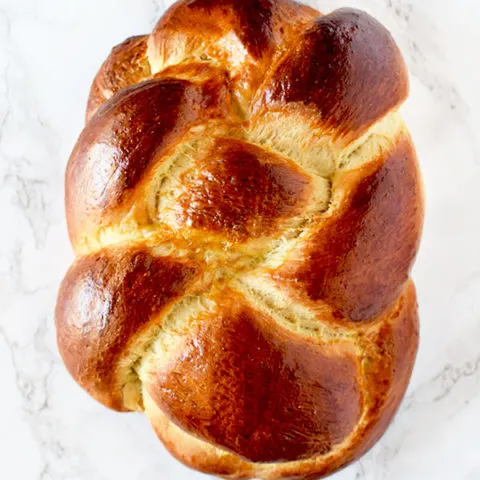
This challah is a water challah, which is particularly popular in Israel. It does not call for any eggs (except for an egg wash), but is still light and fluffy.
Ingredients
- 5 cups all-purpose flour (600 grams)
- ¾ cup white sugar (150 grams)
- ⅓ cup oil (80 milliliters)
- 5 teaspoons instant dry yeast
- 2 teaspoons salt
- 1 and ½ cup water, warm (355 milliliters)
Wash
- 1 egg, beaten
Optional Topping
- 1 tablespoon sesame seeds
Instructions
- In the bowl of a stand mixer, combine flour, sugar, oil, yeast, salt.
- Using a bread hook, knead, adding the water about a quarter cup at a time until the dough feels similar to play-doh.
- Cover with a damp towel and set in a warm place. Let the dough rise until double in size (about 45 minutes).
- Remove the dough and divide it in half. Take one half and braid on a floured surface. Repeat with the remaining dough.
- Place both on a parchment paper lined baking sheet and brush with egg wash. Let rise until double in size (about 45 minutes).
- Add sesame seeds if desired.
- Preheat the oven to 350°F or 175°C.
- Bake for 30 to 40 minutes or until golden brown.
Recommended Products
Some of the links below are affiliate links, which means that if you choose to make a purchase, I will earn a small commission. This commission comes at no additional cost to you.
Nutrition Information:
Yield:
24Serving Size:
1Amount Per Serving: Calories: 153Total Fat: 4gSaturated Fat: 0gTrans Fat: 0gUnsaturated Fat: 3gCholesterol: 8mgSodium: 180mgCarbohydrates: 27gFiber: 1gSugar: 6gProtein: 3g
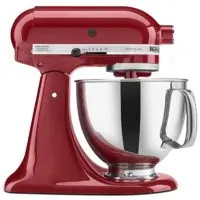
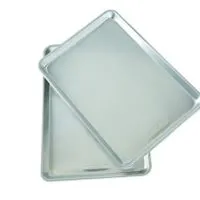
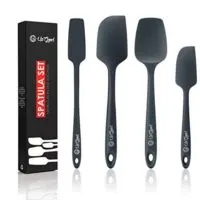
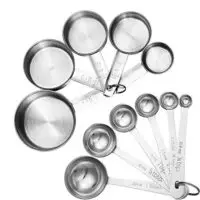
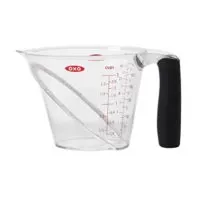
Linda
Friday 7th of February 2025
Hi, this is my first time to your site, and I just wanted to tell you that I have already copied 3 recipes that sound so great. I wanted to tell you that you explain everything so well. Thank you so much for your site if you ever get another please let me know I am definitely going to try this one. Kudos to You
ElissaBeth
Monday 10th of February 2025
Thank you so much for your kind words! ❤️❤️❤️
Emily
Wednesday 16th of October 2024
Literally the best challah recipe! I make it every week!! I do add a bit of honey for some extra sweetness!
ElissaBeth
Friday 25th of October 2024
I'm so glad to hear it ❤️
Gladys
Sunday 10th of December 2023
Hi, just wondering, how would I divide this recipe to make rolls?
ElissaBeth
Sunday 10th of December 2023
That would really depend on the size of the rolls you make and the style of rolls you choose...
Saturday 16th of September 2023
My Jewish BIL has come to live with us. I'm part Ashkenazi, and our family always honored both Jewish and Catholic traditions but, now that Dave is with us, I really wanted to reinforce his heritage. Serving Beef with Tzimmes, carrots roasted with honey, and an olive-oil apple/honey cake with a pistachio/slivered almond/honey syrup for tomorrow's shabbat. His only comment was, "And with Challah, it'd be better than my mom's!" lol I would never presume to upstart his mom, Rhoda, but I'm gonna give this a whirl, tomorrow, just to knock his socks off!!! Thank you SO MUCH for an UN-SCARY recipe!!! Legit!!! I DO bake!!! But I've been terrified to tackle Challah... Like... the pressure!!! lol #feelingconfident ~Chrissie
ElissaBeth
Tuesday 3rd of October 2023
I'm so glad that you find my challah recipe unscarry! I want all of my recipes to be completely NOT intimidating so this comment shows me I'm do good with that :) I hope you all enjoyed the challah!
Marjie
Friday 9th of September 2022
This is a great recipe, especially for an amateur challah baker. I reduce the sugar a bit, though it is deliciously sweet with the full amount the recipe calls for. Also, I do not have a stand mixer with a bread hook, but find that it is not hard to knead by hand.
ElissaBeth
Tuesday 13th of September 2022
I'm glad you enjoyed the challah :)